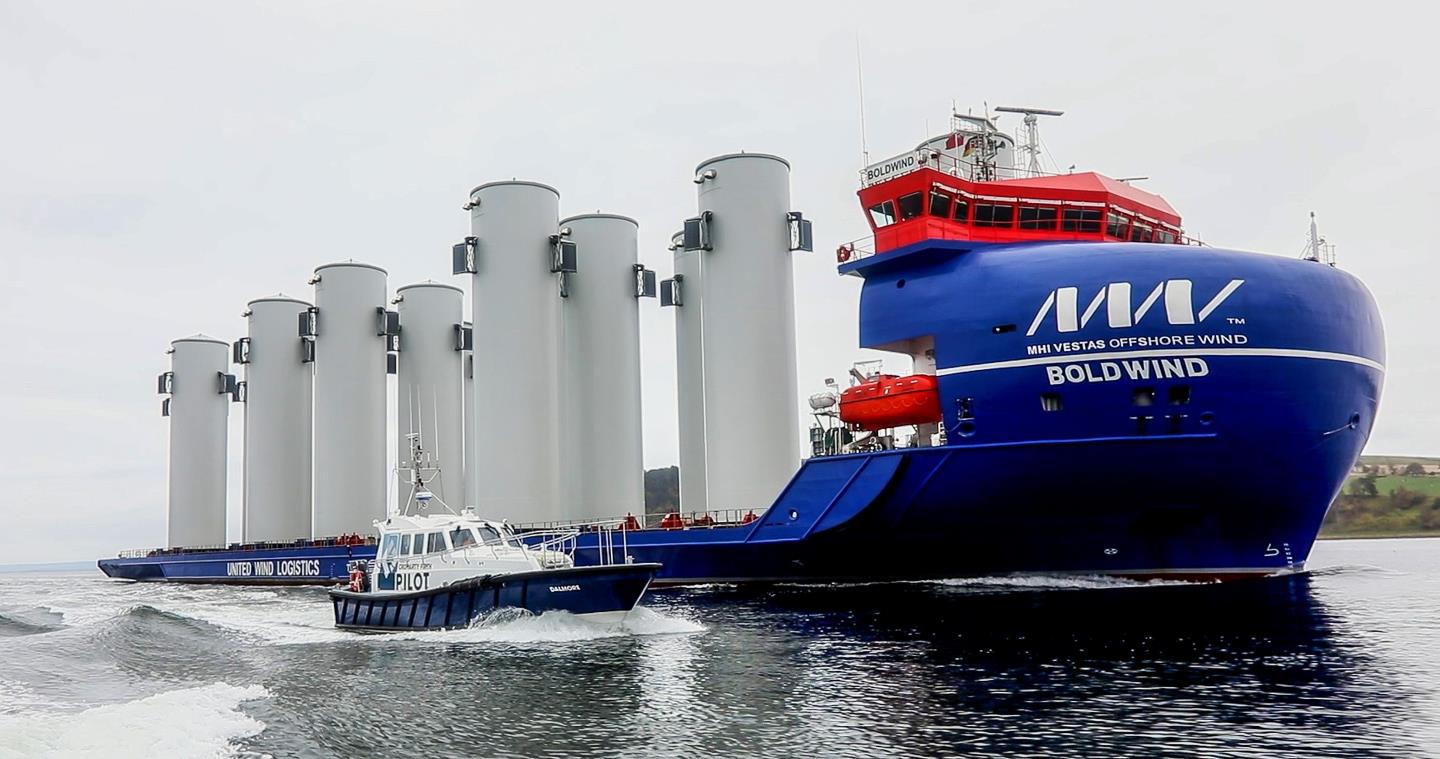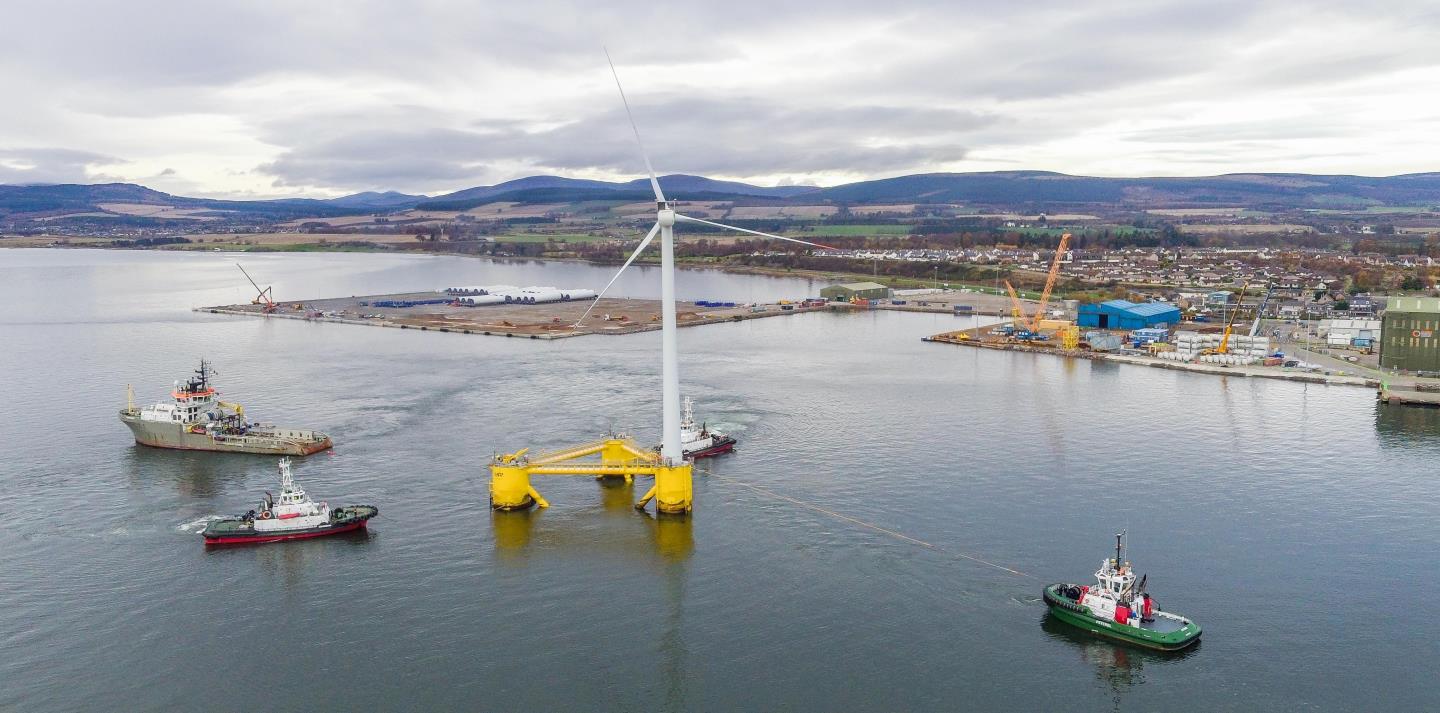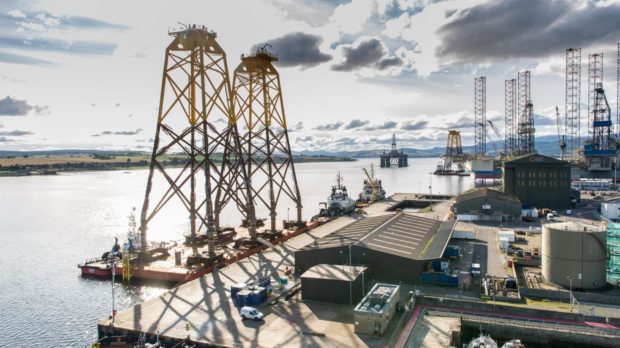The Cromarty Firth has for decades provided the perfect base for companies to launch their operations – from oil and gas to cruise, and now renewables. With Scotland on the cusp of a clean energy revolution, there is nowhere in the country better placed to take advantage of this seismic shift in energy generation.
Nestled next to its deep, sheltered waters is the Port of Cromarty Firth, named Business of the Year and Coastal Powerhouse at the most recent Maritime UK Awards, a key barometer of success in the UK’s £46.1 billion industry.
Both awards were recognition by their maritime peers of the hard work and dedication of the Trust Port’s management in positioning the port as a prime facility in Scotland to facilitate this renewable energy transformation.
Over the past seven years, Port of Cromarty Firth has invested more than £50 million in its infrastructure, specifically targeted at the growing opportunities in offshore renewables, which was recently named “Quay West” by HRH The Princess Royal in an official visit to the port.
These facilities include significant open laydown capacity, deep-water berths and sheltered anchorages, suitable for accommodating the largest offshore wind components such as turbine blades, tower sections and foundations, as well as the biggest offshore support and cruise vessels.

Added to that is the Cromarty Firth’s world-leading supply chain, expertise and proven track record to service future renewable developments. It is also perfectly located for 14 of the 15 sites identified for future offshore wind and floating offshore wind projects in Scotland, predicted to be worth £26 billion to the national economy.
These sites are included in the ScotWind leasing round – seen by the Scottish Government as pivotal in meeting the country’s net zero targets and growing the domestic offshore renewables sector – which awards leases for future offshore wind developments.
The port is also involved in the North of Scotland Hydrogen Programme, comprising a number of developments, the main one being the construction of a large-scale onshore electrolysis facility. A kick-starter ‘Distilleries Project’ is underway, a partnership involving the port, energy firms ScottishPower and Pale Blue Dot Energy, plus drinks giants Glenmorangie, Whyte and Mackay and Diageo. Together, they are paving the way for a green hydrogen hub, powered by electricity from renewable sources, to provide distilleries in the region with hydrogen to assist in decarbonising their heating and processes. The port, due to its excellent proximity to offshore wind and floating offshore wind production sites, would act as the hub.
However, to establish this infrastructure, it must be able to guaranteed supply. Recognising this requirement, the Port of Cromarty Firth has now also signed a Memorandum of Understanding with Norwegian firm Gen2 Energy AS to create a commercial pathway to import green hydrogen from Norway into the UK energy market.
The partnership will provide a security of supply for industry and will guarantee green hydrogen to those who want access to the clean energy by mid-2023, so they have the confidence to make concrete plans and investments to begin switching their infrastructure.
The port is also leading the collaborative initiative, Opportunity Cromarty Firth (OCF), formed last year and made up of over a dozen partners from the private, academic and public sectors, including Global Energy Group, University of the Highlands and Islands and The Highland Council, with the ambition of the Cromarty Firth becoming a Scottish Government-approved ‘Green Port’.
Port chief executive, Bob Buskie, says the current work being undertaken by the port and its partners shows just how dynamic their businesses have become to ensure the Cromarty Firth, the Highlands, and Scotland, can turn ambition into a green reality.

He explains: “The project pipeline is vast and its importance to the Cromarty Firth, and to Scotland’s economy more broadly, cannot be underestimated. These developments will bring skilled jobs and high-wage opportunities to the Highlands on a level not seen since the oil boom of the 1970s.
“We have already developed a substantial track record in renewables and supported more offshore wind projects than any other Scottish location. These key contracts include the Moray East and Beatrice Offshore Windfarms in the Outer Moray Firth and the Kincardine Offshore Windfarm off Aberdeen.
“That leading position is set to continue with the upcoming ScotWind developments, creating a pipeline of sustainable supply chain opportunities – which locally we have the expertise to deliver – that will support quality employment for generations.”
Meanwhile, the port is looking forward to supporting the cruise sector as it looks to bounce back following the crippling effects of the Covid-19 pandemic. Before the first lockdown the port enjoyed its best ever cruise season in 2019, where it welcomed 104 ships and more than 167,000 passengers, with some of the world’s largest cruise ships taking advantage of the Firth’s sheltered location and deep-water berths.
Bob Buskie added: “The cruise sector has been a tremendous success story for the Highlands. It is extremely important to the region’s tourism industry and we are working hard with the appropriate authorities to make sure that cruise activity returns safely and securely.”
